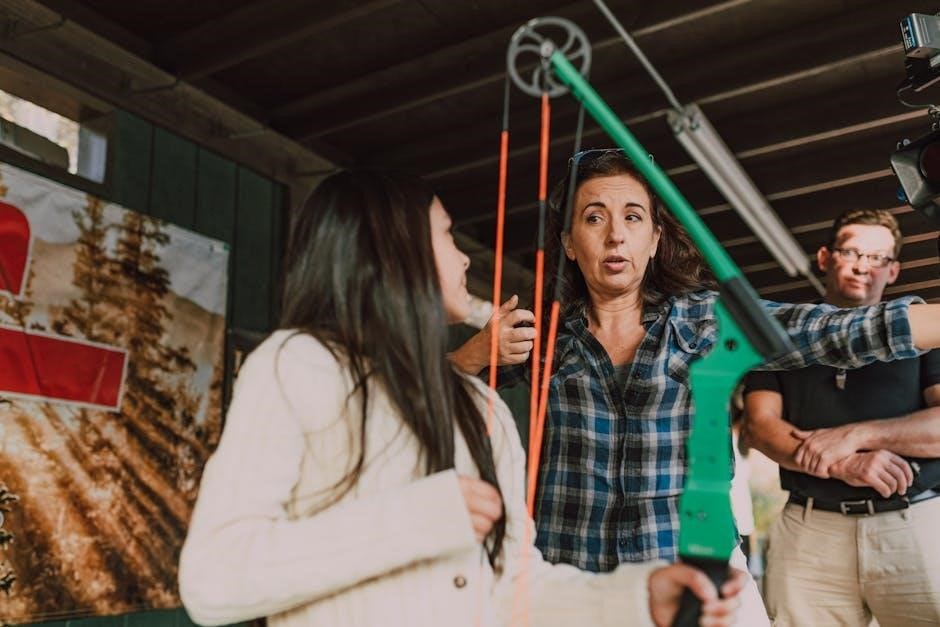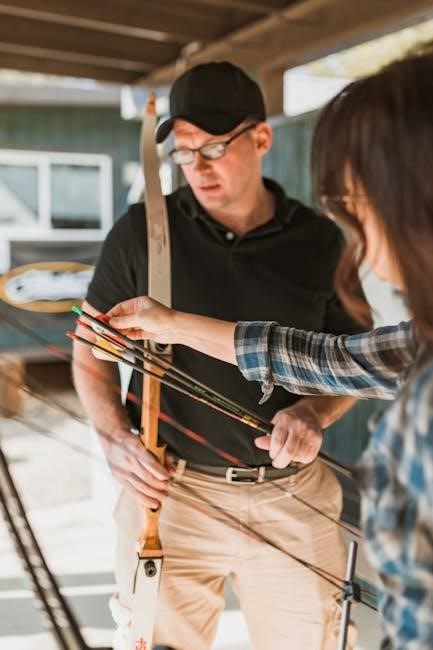Lionel Trains, a legendary brand in model railroading, has captivated enthusiasts since 1900․ This master index serves as a comprehensive guide, aiding collectors in identifying and cataloging Lionel trains and accessories, providing detailed insights into locomotives, track systems, and rare models․ It’s an essential resource for both seasoned enthusiasts and newcomers, offering a structured approach to understanding the rich history and diversity of Lionel’s iconic electric trains․
Overview of Lionel Trains History
Lionel Trains, founded in 1900 by Joshua Lionel Cowen, has become a cornerstone of model railroading․ The company’s early success stemmed from its innovative electric trains, with the 1906 Lionel Electric Train becoming an iconic symbol․ By the 1920s, Lionel had entered its “Golden Age,” introducing groundbreaking designs like the Standard Gauge system․ The Great Depression posed challenges, but Lionel adapted, offering more affordable sets․ Post-World War II, the brand embraced realism, producing detailed locomotives and accessories․ The 1940s and 1950s saw the rise of popular series like the F3 and GP7/GP9․ Today, Lionel Trains remains a beloved brand, cherished for its rich history and enduring appeal to collectors worldwide․
Significance of Lionel Trains in Model Railroading
Lionel Trains holds a pivotal role in shaping the model railroading hobby, offering unparalleled quality, detail, and innovation․ Since 1900, Lionel has set industry standards, capturing the essence of railroading history while inspiring generations of enthusiasts․ Their electric trains, with intricate designs and realistic features, have made them a cornerstone of model railroading culture․ Lionel’s contributions have not only preserved railroad heritage but also made the hobby accessible to a wide audience, fostering a sense of community and creativity․ Their iconic models, such as the F3 and GP7/GP9 locomotives, remain highly sought after by collectors, solidifying Lionel’s legacy as a leader in the field․

Purpose of the Lionel Trains Master Index
The Lionel Trains Master Index is a comprehensive identification tool designed to help collectors and enthusiasts quickly locate specific Lionel train models and accessories․ It serves as a detailed guide, providing essential information for identifying and cataloging Lionel trains, including locomotives, track systems, and rare models, while also aiding in understanding their historical and market value․
Understanding the Need for a Comprehensive Identification Guide
The vast array of Lionel train models, including locomotives, rolling stock, and accessories, has created a complex landscape for collectors․ With numerous variations, production eras, and rare models, identifying and valuing Lionel trains can be challenging․ A comprehensive identification guide is essential to provide clarity and standardization, helping enthusiasts and collectors navigate this intricate hobby․ By offering detailed descriptions, historical context, and visual references, the guide empowers users to make informed decisions about their collections․ This resource is particularly vital for distinguishing between original models, repaints, and restorations, ensuring accuracy in identification and valuation․ It serves as a cornerstone for building, maintaining, and enhancing Lionel train collections with confidence and precision․
How the Master Index Aids Collectors and Enthusiasts
The Lionel Trains Master Index is an indispensable tool for collectors and enthusiasts, offering a centralized resource for identifying and understanding Lionel models․ It simplifies the process of distinguishing between similar models, ensuring accurate identification and valuation․ The guide provides detailed information on production dates, variations, and rare models, helping collectors make informed purchasing decisions․ Additionally, it serves as a reference for maintaining and restoring trains, ensuring they retain their value and functionality; By organizing complex data into an accessible format, the Master Index empowers collectors to expand their knowledge, enhance their collections, and connect with a broader community of Lionel train enthusiasts, fostering a deeper appreciation for the hobby․

Structure of the Lionel Trains Identification Guide
The guide organizes trains into categories, such as locomotives, accessories, and track systems, with detailed descriptions, historical context, and high-quality images for easy identification and reference․
Organizational Methodology of the Guide
The Lionel Trains Master Index is structured chronologically, categorizing models by era, from early 20th-century designs to modern productions․ Each section is further divided by product type, such as locomotives, rolling stock, and accessories․ Models are cross-referenced by original catalog numbers, making identification straightforward․ Detailed descriptions highlight distinguishing features, paint schemes, and mechanical variations․ The guide also incorporates visual aids, such as images and diagrams, to help users recognize subtle differences․ This systematic approach ensures that collectors and enthusiasts can quickly locate specific models and understand their historical significance․ The methodology emphasizes clarity and accessibility, catering to both novice and experienced collectors․
Key Features and Components of the Master Index
The Lionel Trains Master Index is rich in detailed descriptions, high-quality images, and historical context, ensuring precise identification․ It includes comprehensive catalog listings, production dates, and variant specifications․ The guide features a robust search function, enabling quick access to specific models․ High-resolution images showcase intricate details, aiding in accurate identification․ Additionally, the index includes rarity rankings, historical background, and collector insights․ It also offers a valuation guide, reflecting current market trends․ The Master Index is complemented by expert contributions, providing authoritative knowledge․ These features make it an indispensable resource for collectors, hobbyists, and historians seeking to understand and appreciate Lionel Trains fully․

Lionel Trains Locomotives
Lionel trains offer diverse locomotives, from steam to diesel and electric, each with unique designs and historical significance, appealing to collectors and enthusiasts worldwide always․
Steam Locomotives: Identification and Classification
Lionel steam locomotives are iconic, with detailed designs mirroring real-world prototypes․ Identification involves examining key features such as wheel configurations (e․g․, 2-8-4 Berkshire, 4-6-4 Hudson), cylinder types, and valve gear mechanisms․ Classification is based on historical eras, from early 20th-century models to postwar versions․ The Master Index provides a systematic approach to distinguish between similar models, noting variations in paint schemes, numbering, and accessories․ For collectors, understanding these nuances is crucial for accurate identification and valuation․ The guide also highlights rare variants, such as the 773 Hudson with its unique whistle and ornate detailing․ This section is indispensable for enthusiasts seeking to authenticate and classify Lionel steam locomotives effectively․
Diesel Locomotives: Models and Variants
Lionel diesel locomotives represent a diverse range of models, capturing the essence of postwar railroad evolution․ The Master Index categorizes these locomotives by prototype, such as the iconic F3, GP7, and GP9, each with distinct shell designs and detail variations․ Key identification factors include paint schemes, road names, and operational features like horn types or headlight configurations․ Variants often reflect real-world liveries or promotional editions, adding collectible value․ The guide also highlights rare models, such as the 2333 Santa Fe FT with unique chrome accents․ By documenting these nuances, the Master Index aids collectors in distinguishing between common and rare diesel locomotives, ensuring accurate identification and informed collecting decisions․
Electric Locomotives: History and Development
Lionel’s electric locomotives hold a storied place in model railroading history, debuting in the early 20th century․ These models were pioneers in capturing the spirit of electrified railroads, offering smooth operation and realistic detailing․ The 400E, introduced in 1913, was one of Lionel’s first electric locomotives, featuring a striking brass body․ Over the years, Lionel expanded its electric lineup, incorporating advancements like illuminated headlights and adjustable speed controls․ The 1930s saw the arrival of the iconic “Standard Gauge” electric locomotives, which became synonymous with luxury and precision․ The Master Index meticulously documents these models, highlighting their evolution, unique features, and historical significance, making it an invaluable resource for collectors and historians alike to trace the development of Lionel’s electric fleet․

Detailed Identification of Lionel Train Models
The Lionel Trains Master Index provides detailed methods for identifying models, including specific features, model numbers, and production periods, aiding collectors in precise classification and authentication․
Alco Locomotives: Specific Models and Features
Lionel’s Alco locomotives are highly detailed models capturing the essence of the American Locomotive Company’s iconic designs․ The FA and FB models are prominent, known for their distinctive shell designs and realistic paint schemes․ These locomotives often feature operating headlights, horn sounds, and adjustable couplers․ The Master Index helps identify specific models by catalog numbers, production years, and unique variations, such as A/A-B sets or powered vs․ non-powered units․ Collectors can authenticate rare versions by referencing original packaging, decals, and chassis markings․ The guide also highlights historical significance, making it invaluable for enthusiasts seeking to expand or verify their Alco collections with precision․
F3 and GP7/GP9 Locomotives: Distinctive Characteristics
Lionel’s F3 and GP7/GP9 locomotives are celebrated for their authenticity and intricate details․ The F3 models, produced from the 1940s to 1950s, feature streamlined art deco designs and were originally marketed as “στυlish” and powerful․ GP7 and GP9 models, introduced later, boast rugged, utilitarian styling with carbody variations․ Both series are notable for their realistic paint schemes, chrome-plated grilles, and operating headlights․ The Master Index helps collectors distinguish between these models by catalog numbers, production years, and specific features like roof details or truck styles․ Rare versions, such as those with unique decals or two-tone paint, are highlighted, aiding enthusiasts in identifying and valuing these iconic locomotives accurately․
Center Cab (44 Ton) Locomotives: Unique Traits
Lionel’s Center Cab (44 Ton) locomotives are renowned for their compact, versatile design and durable construction․ Introduced in the 1950s, these models were inspired by real-world switchers used in industrial settings․ They feature a distinctive central cab with a low-profile hood, allowing easy access to tight spaces․ Available in various scales, including O and HO gauge, these locomotives are prized for their smooth operation and realistic details․ The Master Index highlights their unique traits, such as dual-purpose functionality for both freight and passenger service, and their striking color schemes․ Collectors appreciate their operating features, like illuminated headlights and optional sound systems․ Rare versions, such as those with unique paint schemes, are highly sought after, making them a standout in Lionel collections․

Lionel Train Accessories and Track Systems
Lionel Train Accessories and Track Systems offer a wide range of components, from various track types to detailed accessories, enhancing the realism and functionality of model railroading setups․

Track Value and Types: Understanding the Variations
Lionel train tracks come in various types, each with unique characteristics and historical significance․ The classic three-rail system dominated early production, offering durability and ease of use․ Later, Lionel introduced two-rail tracks, mirroring real-world railroads for enhanced realism․ The materials used, such as tin, brass, or plastic, vary across different eras, affecting both appearance and functionality․ The value of these tracks is determined by factors like rarity, condition, and historical importance․ Vintage tracks in pristine condition can be highly sought after by collectors․ Understanding these variations aids enthusiasts in identifying authentic pieces and assessing their worth, making it crucial for those looking to complete or restore their Lionel layouts․
Accessories: Signals, Switches, and Other Components
Lionel train accessories, such as signals and switches, are essential for creating realistic and functional layouts․ Signals, including semaphore and searchlight types, add authenticity by mimicking real railroad operations․ Switches enable track diversions, allowing multiple routes and enhancing layout complexity․ Other components like trestles, bridges, and crossing gates further enrich the setup․ Accessories often feature intricate details and historic accuracy, making them valuable for collectors․ Vintage items, such as early signal systems, are highly sought after and can significantly increase a collection’s value․ Modern accessories incorporate advanced technology, offering remote control and automation․ These components not only enhance functionality but also contribute to the overall aesthetic and operational realism of Lionel train setups․

Rare and Collectible Lionel Trains
Rare Lionel trains are highly sought after by collectors due to their age, limited production, and historical significance․ Certain models, like early 20th-century steam locomotives, are particularly valuable․
Identifying Rare Lionel Train Models
Rare Lionel train models can be identified through specific characteristics, limited production runs, and historical significance․ The Lionel Trains Master Index provides detailed criteria for recognizing these models, emphasizing unique features such as distinctive paint schemes, exclusive production periods, and special editions․ For instance, early 20th-century steam locomotives with intricate detailing are highly sought after․ Additionally, the guide highlights models with unique numbering, special event releases, and collaborations with notable companies․ Rarity is also determined by condition, with mint condition models retaining higher value․ The Master Index offers authentication tips, such as verifying original packaging and manufacturer marks, to distinguish genuine rare models from reproductions․ This resource is essential for collectors aiming to identify and value rare Lionel trains effectively․
Valuation and Market Trends for Rare Trains
The valuation of rare Lionel trains is influenced by factors such as rarity, condition, and demand․ According to the Lionel Trains Master Index, models produced in limited quantities or discontinued decades ago often command higher prices․ Market trends show a steady increase in value for mint-condition, vintage trains with original packaging․ Auction records highlight premium prices for rare locomotives like the 400E Blue Comet or the 700E Silver Arrow․ Collectors and investors are drawn to these models due to their historical significance and potential appreciation․ The guide provides insights into current market trends, helping enthusiasts make informed decisions when buying, selling, or trading rare Lionel trains․

Maintenance and Restoration of Lionel Trains
Proper cleaning, lubrication, and storage are essential for preserving Lionel trains․ Restoration involves refinishing surfaces and replacing worn parts to maintain functionality and aesthetic appeal over time․
Best Practices for Maintaining Your Lionel Trains
Maintaining Lionel trains requires regular cleaning, proper lubrication, and careful storage to preserve their condition and functionality․ Always use soft, dry cloths to remove dust and dirt, avoiding harsh chemicals․ Lubricate moving parts like axles and gears with lightweight oil to ensure smooth operation․ Store trains in a cool, dry environment, away from direct sunlight to prevent fading or warping․ For track maintenance, clean rails with a track cleaner or fine-grit sandpaper to maintain conductivity․ Test trains on a clean track before storage to identify and address any issues․ Regular maintenance not only extends the lifespan of your Lionel trains but also enhances their performance and appearance over time․
Restoration Techniques for Vintage Models
Restoring vintage Lionel trains involves careful disassembly, cleaning, and refinishing to preserve their original charm․ Start by gently disassembling components, taking note of screw types and wire connections․ Use mild detergents and soft brushes to clean surfaces without damaging paint or decals․ For repainting, match original colors using high-quality enamels and apply thin coats to avoid drips․ Replace worn or broken parts with authentic or reproduction components to maintain functionality․ Lubricate moving parts with lightweight oil to ensure smooth operation․ Test the train on a clean track after restoration to ensure proper performance․ Always handle vintage models with care to avoid further damage and maintain their collectible value․

Resources for Lionel Train Enthusiasts
Essential books like “The Lionel Train Book” and collector guides provide detailed insights․ Online forums and communities offer knowledge sharing and trading opportunities for enthusiasts․
Recommended Books and Guides
For Lionel train enthusiasts, several authoritative books and guides are indispensable․ Lionel Trains: The Golden Years, 1925-1975 by Roger Carp is a definitive guide offering detailed history and model specifics․ The Lionel Train Book by Bob Berne covers a wide range of topics, from locomotives to accessories․ Additionally, Lionel: A Century of Timeless Toy Trains by Michael J; Antonucci provides a comprehensive historical overview․ Collector guides like Greenberg’s Lionel Trains Pocket Price Guide are essential for identifying models, production years, and variations․ These resources are widely available in bookstores and online, making them accessible for both novice and experienced collectors․
Online Communities and Forums for Collectors
Online communities and forums are invaluable resources for Lionel train collectors․ Platforms like Lionel Forums and The Train Collectors Association offer spaces to discuss model specifics, share restoration tips, and connect with fellow enthusiasts․ Facebook groups such as Lionel Train Collectors foster collaboration and knowledge exchange․ These forums often feature detailed discussions on rare models, maintenance techniques, and market trends․ Additionally, specialized forums like Trainorders․com and Railway Preservation News provide insights into historical context and preservation efforts․ Engaging with these communities enhances collecting experiences and provides access to a wealth of expertise, helping collectors make informed decisions and expand their knowledge of Lionel trains․
The Lionel Trains Master Index is an invaluable resource for collectors, providing comprehensive identification, valuation, and restoration insights․ It enhances the collecting experience by connecting enthusiasts, fostering community, and inspiring further exploration and enjoyment of Lionel trains․
Final Thoughts on the Lionel Trains Master Index
The Lionel Trains Master Index stands as a testament to meticulous research and dedication, offering unparalleled insights into the world of Lionel trains․ It serves as both a historical archive and a practical reference, empowering collectors to identify, value, and preserve their treasured models․ By bridging the gap between past and present, the Master Index ensures that the legacy of Lionel trains endures․ For enthusiasts, it is more than a guide—it is a celebration of a timeless hobby, inspiring continued discovery and passion for these iconic trains․
Encouragement for Further Exploration and Collecting
Embark on a journey to deepen your passion for Lionel trains by exploring the vast possibilities this hobby offers․ The Master Index serves as your gateway to discovering rare models, understanding market trends, and connecting with fellow enthusiasts․ Whether you’re a seasoned collector or just starting out, the guide inspires you to pursue new additions to your collection․ Share your discoveries, learn from others, and contribute to the vibrant community that celebrates these iconic trains․ Let the Master Index ignite your curiosity and fuel your quest to uncover the hidden gems of Lionel railroading․

